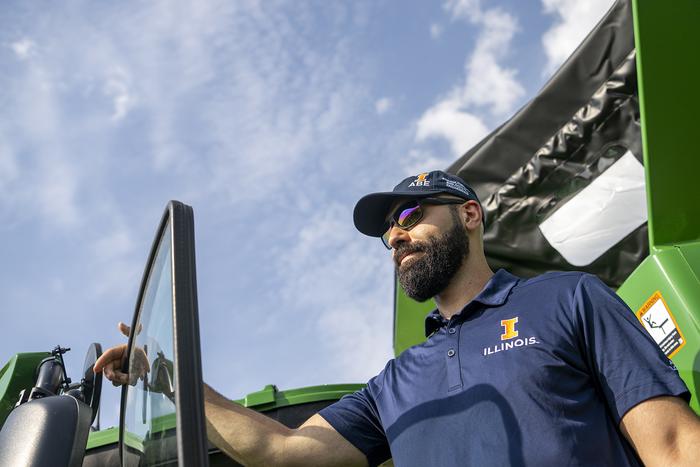Illinois study: Systematic review of agricultural injuries can help inform safety measures
URBANA, Ill. – Agricultural occupations are hazardous with one of the highest rates of workplace injuries and fatalities in the U.S. The manual and often strenuous nature of the work, combined with the use of machinery and exposure to environmental hazards create a challenging work environment. Understanding the nature and causes of injuries can help […]

URBANA, Ill. – Agricultural occupations are hazardous with one of the highest rates of workplace injuries and fatalities in the U.S. The manual and often strenuous nature of the work, combined with the use of machinery and exposure to environmental hazards create a challenging work environment. Understanding the nature and causes of injuries can help improve safety guidelines and policy measures. However, obtaining a comprehensive overview of injuries is hindered by the absence of a central reporting system. Two new papers from the University of Illinois Urbana-Champaign provide a systematic review of academic literature on agricultural injuries in the U.S. and globally.

Credit: College of ACES
URBANA, Ill. – Agricultural occupations are hazardous with one of the highest rates of workplace injuries and fatalities in the U.S. The manual and often strenuous nature of the work, combined with the use of machinery and exposure to environmental hazards create a challenging work environment. Understanding the nature and causes of injuries can help improve safety guidelines and policy measures. However, obtaining a comprehensive overview of injuries is hindered by the absence of a central reporting system. Two new papers from the University of Illinois Urbana-Champaign provide a systematic review of academic literature on agricultural injuries in the U.S. and globally.
“When it comes to agriculture, there’s no single source for injury data. In other occupations, work injuries in the U.S. must be reported to the Occupational Safety and Health Administration (OSHA), but farm work is often exempt from these requirements because many farms are small and have less than 10 full-time employees,” said Salah Issa, an assistant professor in the Department of Agricultural and Biological Engineering (ABE) and an Illinois Extension specialist; both units are part of the College of Agricultural, Consumer and Environmental Sciences (ACES) at Illinois. ABE is also part of The Grainger College of Engineering at Illinois.
“There have been a lot of grassroots efforts to track surveillance data, but they are based on different methods so it’s hard to get a complete look at agricultural injuries. Our work combines results into one large dataset, providing a comprehensive overview of previous research,” Issa explained.
In the first study, the researchers conducted a systematic literature review of 48 academic papers published in the U.S. and Canada from 1985 to 2022.
“We identified five different surveillance methods: newspaper clippings, surveys, death certificates, hospital records and emergency medical services (EMS) data, and multiple sources,” said Sihan Li, a doctoral student in ABE and lead author on the first paper.
The researchers also analyzed and categorized information such as the type and source of injury, the event leading up to it, and the gender of the victim.
Overall, vehicles (including tractors and ATVs) were the most common source of injury, with over 55,000 incidents reported, as well as the leading source of fatalities. Other significant causes of injury included machinery, slips and trips, animals, chemicals, and tools. Men were more than twice as likely as women to be victims of injury. Age varied by surveillance method, with newspaper clippings skewed to younger victims (22% of incidents) and death certificates skewed to older victims (30% over 65).
In the second study, the researchers reviewed 69 articles from 17 countries in North America, Europe, and Asia, including the U.S., Canada, Turkey, India, Pakistan, Austria, Italy, and others.
The main data sources identified in these studies were hospital records, followed by surveys, government records (including death certificates), insurance claims, and multiple sources.
“For the global perspective, we narrowed our scope to focus primarily on machine-related injuries, which involves tractors and farm equipment,” said Mian Muhammad Sajid Raza, a doctoral student in ABE and lead author on the second paper.
The researchers found that tractors stand out as the leading cause of fatal incidents, with tractor overturns accounting for 45% of all machinery-related incidents in North America. Furthermore, injuries linked overall to agricultural machinery significantly contribute to both fatal and non-fatal incidents.
“It is also interesting to look at other sources of injury. In North America and Europe, animals are the cause of less than 3% of all injuries. But in Asia, animals represent 7% of the total injuries and 35% of the fatalities. This is likely because farming is less automated and animals are still used extensively in some Asian countries,” Raza said.
The research shows agriculture is a dangerous occupation globally, with injuries reported in at least three continents. Overall trends are as expected, with vehicles and machinery playing a large role in injuries and fatalities, Issa noted.
“One of our most important findings is that the way you conduct injury surveillance will have an impact on your results,” he said. “For example, if you use newspaper clippings, your findings will skew towards a younger age group. The discrepancies are so large it’s clearly worth evaluating the type of surveillance methods employed, and it’s important to use multiple sources to get a good picture of what’s going on.”
Understanding the nature and source of injuries is important for developing educational programs and interventions, Issa concluded.
Both papers, “Agricultural Injury Surveillance in the United States and Canada: A Systematic Literature Review’ [DOI: 10.1080/1059924X.2024.2304699] and “Global Patterns of Agricultural Machine and Equipment Injuries- A Systematic Literature Review” [DOI: 10.1080/1059924X.2024.2304704] are published in the Journal of Agromedicine.
Journal
Journal of Agromedicine
DOI
10.1080/1059924X.2024.2304699
Method of Research
Literature review
Article Title
Agricultural Injury Surveillance in the United States and Canada: A Systematic Literature Review
Article Publication Date
22-Jan-2024
What's Your Reaction?

































